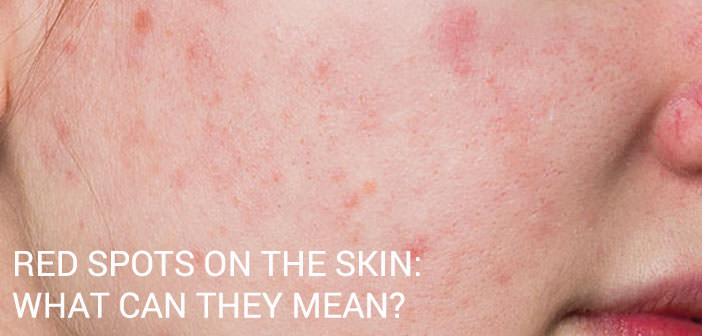Red Spots on the Skin: What can they mean?
Sometimes you may notice the appearance of red spots on the skin. What is it about?
If you have noticed the appearance of some red spots on your skin or maybe a single red spot the size of a lentil, you are probably wondering if there is a need to worry or not. How long has it been there? Could it be skin cancer? Will it be the first stage of melanoma? What if it was a harmless spot? In this article, we will try to answer all these questions.
Let’s start by saying that red spots can manifest in many different ways. There are no standard sizes and shapes. In all cases, the most common manifestation is that of small dots on the skin.
The more closely the skin is examined, the more the number of these small red spots grows. Some of them can be a little wider, like the patch that could leave a ballpoint pen. Others can reach 2 millimeters.
Also, on closer inspection, these spots may appear irregular in shape. Finally, even the coloring is not always uniform: it ranges from pale red (near pink) to be darker.
Some individuals have red spots all over their bodies. In these cases, the right term to use would be cherry angioma: it usually affects people after 40 years. The spot has a smooth and bright red surface (just like a cherry).
The dermatologist can diagnose it by analyzing the appearance and changes in the size of the stain over time. In all cases, a biopsy could prove very useful to confirm the diagnosis. This kind of red spot on the skin is almost always not considered dangerous for human health. It is experienced only as an aesthetic ” problem. ”
Sometimes, it can happen to take foods that can cause allergies and the appearance of red spots. The problem can be solved by carrying out laboratory tests to understand personal allergies and eliminating certain foods from the diet. The most common allergy-causing foods are egged, dried fruit, cow’s milk, and some vegetables.
Table of Contents
To learn more, read: Red spots?
It can be a food allergy. So why do these red spots appear? The red spots on the skin appear following various causes. The most common are:
Leukoclastic vasculitis
Inflammation of the blood vessels, most often of the capillary, ends as a consequence of an infection, medications, or autoimmune processes.
Schamberg syndrome
A benign disorder that manifests itself with red spots like cayenne pepper on the legs of older people.
Passage of blood from the vessels to the skin
Caused by scratches and damage to the capillaries.
On the extravasation of blood, it is appropriate to spend a few more words. It is widespread to cause it without even realizing it. If you notice red spots under the eyes or the eyebrows or near the bridge of the nose, do not worry. It is skin cancer. Often one has to deal with extravasation of blood due to a wrinkling of the skin in that area.
Sometimes even the pressure of a nail is enough to relieve an itch. In these cases, there is nothing to fear. However, a pervasive case is that of individuals preparing to play volleyball for the first time or resume doing it after a long stop.
The body is no longer used to the strong and sudden pressure due to the ball pressing against the forearms. As a result, the next day, many red spots appear on the skin that disappears after several days, often fading towards orange before disappearing completely.
Another cause of itchy red spots on the skin could be atopic dermatitis.
The skin cancer nightmare
Unfortunately, the appearance of red spots on the skin may also be linked to melanoma. Usually, it manifests itself as a tiny red dot. Unfortunately, it is effortless to track down melanoma images on Google.
Most often, they have a brown, purple, and black color. So the possibility that a small red spot is an early melanoma is there. And we have to reckon without being alarmed.
Conclusion: General guidelines
If you notice a red spot on your skin, don’t be alarmed immediately. Watch it. If it does not show signs of fading and going away, then consult a dermatologist who is better than any other doctor to tell you if it is a harmless stain or a melanoma.

